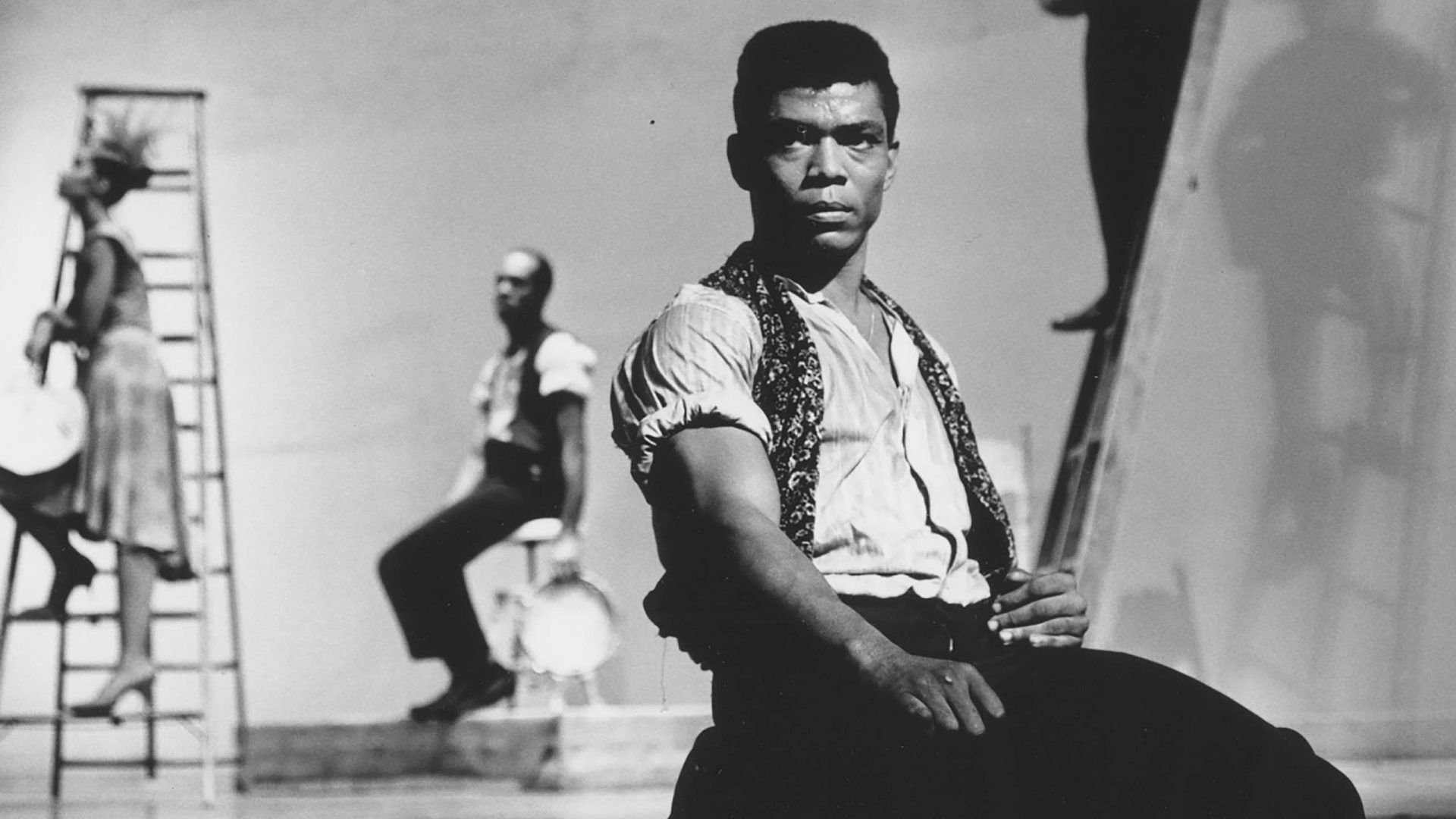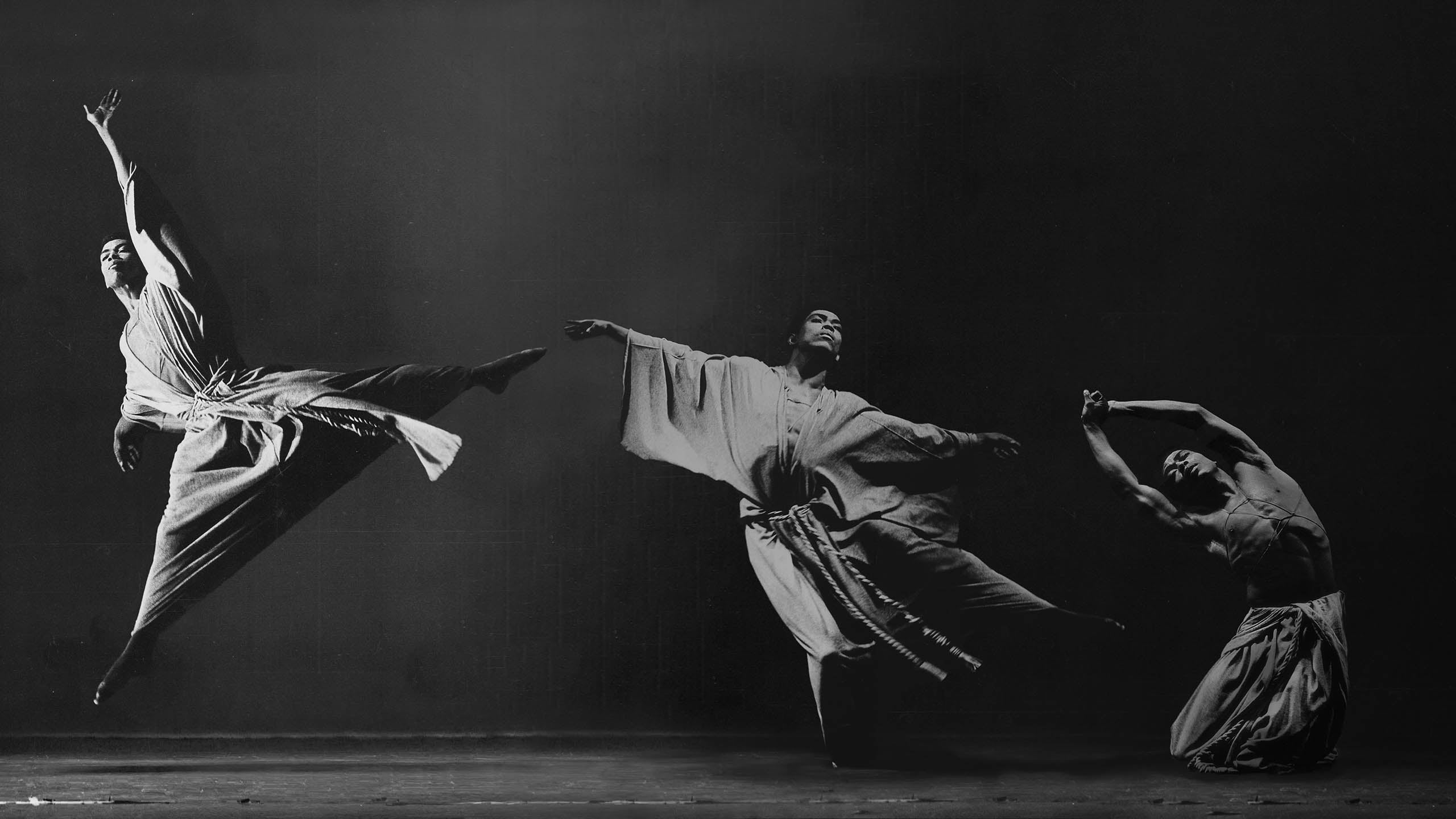
When Ailey opens, the late Cicely Tyson comes into focus, standing glorious and regal on stage at the Kennedy Center for the Arts honoring the famed dancer and choreographer. Even then, at the tail end of his life, Alvin Ailey’s legacy both in the dance world and in the Black community was thunderous.
Though he was an honoree at the Kennedy Center Honors just 30 years after founding the Alvin Ailey American Dance Theatre, not much was known about the reclusive dancer and choreographer’s personal life or past. Using his own words, never-before-seen interviews, archival footage, and accounts from those closest to him like Robert Battle, Carmen de Lavallade, and Judith Jamison, filmmaker Jamila Wignot unveils a figure for whom dancing and movement was like air and water.
Instead of starting from the beginning, Wignot unpacks Ailey’s legacy as it stands now and how his spirit and mark on the dance world continue to evolve and thrive today. The Alvin Ailey Dance Studio stands at West 55th Street in New York City, drawing in dancers and creators worldwide. Wignot’s lens captures the rehearsals leading up to the company’s 60th anniversary in 2018 for “Lazarus,” a performance celebrating Ailey’s life, choreographed by Rennie Harris.
After exploring Ailey’s present-day impact, Wignot pulls her audience into the past using archival footage and photographs— handing the narrative of Ailey’s life off to the man himself. From there, the film becomes a journey, one of a young dancer who arrives in New York City in the 1950s already destined to change the landscape for Black dancers.
Born amid the Great Depression to a young single mother in rural Texas, much of Ailey’s dance inspiration came from his memories. After moving to California at age 12, he happened upon the theater district and became enthralled by dance. But, it wasn’t until he saw the exemplary movements of Katherine Dunham that he began to visualize himself on stage.
Yet, as much as Ailey yearned to dance, Wignot is careful to hint at the terror he must have felt as a gay Black man during the period. He turned to gymnastics first, which was seen as more socially acceptable. Later, he hung out in the back of Lester Horton’s dance studio for over a month before ever stepping onto the dance floor.
Even then, as a charismatic young Black man living in the ’40s and ’50s, Ailey mastered the ability to hide within himself. It was a habit that had taken a mental toll on him by the time he became a global sensation with the weight of his brand and a company of dancers standing on his shoulders.
Wignot’s documentary hones in on three main things — Ailey’s approach to dance, Black identity, and the role the dancer/director played in shielding himself from the spotlight and scrutiny. He expressed his vulnerability only through dance. Yet, across the world, people connected with Ailey because of how he embedded memories and storytelling into the medium. Every single count in his choreography had a justification.

While the dance world can be very rigid and formal, Ailey’s masterpieces like “Revelations” and “Blues Suite” were linked to the church gatherings and juke joints of his youth. His piece “Cry” was a tribute not just to his mother but to Black women, whom he saw as the pillars of the community.
Despite all of his success, Wignot makes it clear that Ailey’s journey was not a glamorous one. In the early days, he and his diverse group of dancers endured racism, little to no pay, and critics who did not understand their work. Ailey also struggled to navigate his personal life, keeping his private relationships under wraps until the very end. Not wanting to be labeled or shamed in any way, it was as if he purposely retreated from those who would have embraced him, especially amid the devastation of the HIV/AIDS epidemic. Wignot also reveals that Ailey’s drive to succeed while upholding a certain image of himself led to a mental breakdown in the late ’70s along with a bipolar diagnosis. As Ailey’s friend, choreographer Bill T. Jones describes it as “a self-loathing that comes from feeling unworthy [of success].”
With much attention is paid to “Lazarus” in Ailey, there’s a wish that Wignot would’ve spent more time in Ailey’s past with footage of the young dancer standing tall and zipping across the stage with his company. In many ways, as he was in real life, Ailey presents a man that was almost distant from the world he helped create. Yet, more than anything, Wignot’s love letter to the late choreographer serves as a reminder that he did succeed in getting what he most wanted in the end. He made the journey just a bit easier for the Black dancers who came after him.
Ailey premiered at Sundance Film Festival, Jan. 30, 2021.





